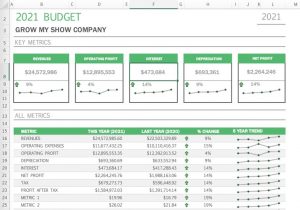First of all, budgeting is not a mathematical exercise. It is not about adding 3% to last year’s numbers.

The best CEOs I’ve worked with–yes, it’s the CEO and not just the CFO–analyze and set their budgets according to the business strategy. It’s strategy first, budget second.
Now, the strategy needs to be measurable. Results need to be quantifiable. Some of those results need to be financial. That’s how you develop your budget.
For revenue, identify number of customers for each product or service line. Yes, this is detailed. It’s also what will drive your marketing activities.
For cost of sales, talk to your major suppliers. Treat them like the valuable strategic partners they are to your business. Work with them to develop optimal price and volume levels so you can accurately forecast your costs (and they can accurately forecast their revenues).
For selling, general, and administrative expenses, identify which activities are most important to providing great customer service and to empowering your team to perform at a high level. Optimize those expenses. Identify which expenses don’t add value and minimize or delete those.
If you must use excel, then make sure you have a detailed person checking formulae and building in cross-checks.
Ideally, your budget lives inside one large system where you can input your strategic goals and metrics, and add detailed assumptions to support revenues and costs.
A budget needs to be a useful management tool to measure performance and hold people accountable. If the only people looking at your budget are the finance people, then you’ve failed.
Keep it strategic, simple, and measurable.
Ultimately, how you spend your money becomes your strategy, so make sure strategy is guiding the way.

